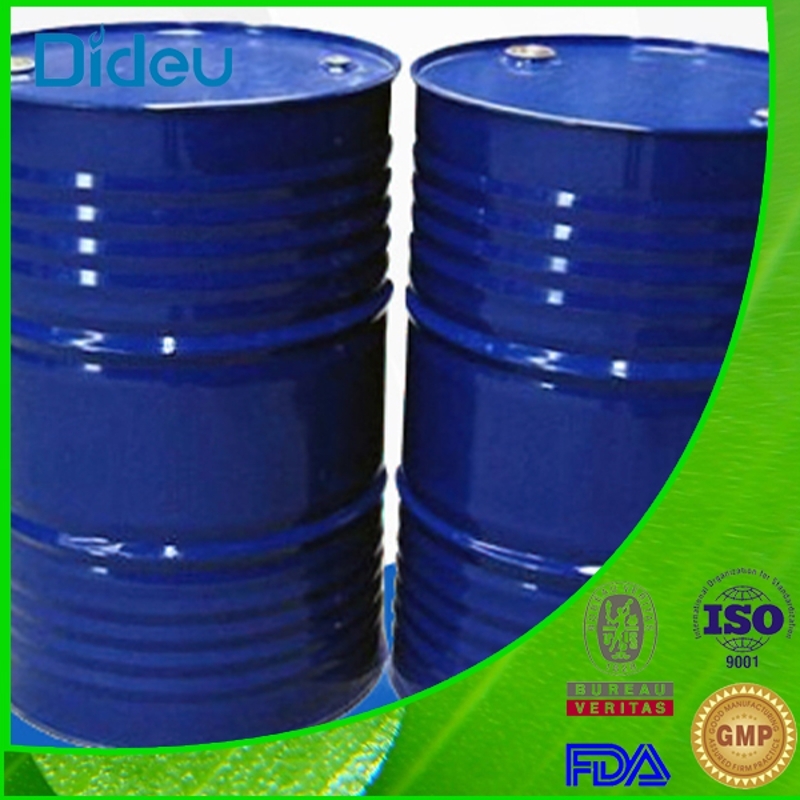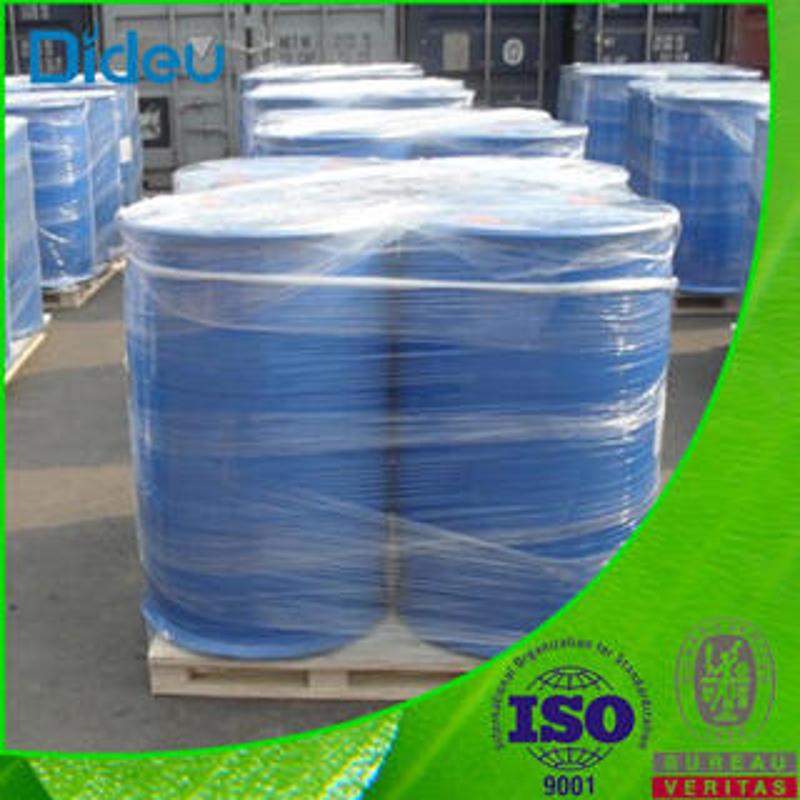The effect of calcium carbonate on the fluid and aesthetic properties of PVC coatings.
-
Last Update: 2020-09-19
-
Source: Internet
-
Author: User
Search more information of high quality chemicals, good prices and reliable suppliers, visit
www.echemi.com
Effects of calcium carbonate on the fluidization and mechanical properties of PVC coatings
Huang Qi, Yan Tonghui, Zhang Qun dynasty, Jiang Tao (School of Materials Science and Engineering, Hubei University, Wuhan 430062) PVC) paste resin in general Made by emulsion polymerization, micro-suspension polymerization, it has the advantages of small particle size, easy dispersion, easy plasticization, good mechanical performance, often with plasticizers to make PVC-based coating products, widely used in artificial leather, floor leather, adhesives, electrical instruments, aerospace automotive materials and other products. However, due to its large viscosity, poor leveling, poor tentacleability, it is usually added inorder fillers to modify it. Calcium carbonate is a commonly used inorgetical filler, which can be used as a composite material for dispersing phase and PVC continuous phase substrate, reducing PVC molecular polarity, achieving toughening effect, inorgeable filler has good tentacles, its addition can not only reduce costs, but also improve the construction of coatings. Shimpi, N.G. and other nano-calcium carbonate as a filler, studied the effect of nano-calcium carbonate on PVC thermodynamic properties, Xu Guomin and other calcium carbonate and talc powder as fillers, studied the effect of filler types on the fluidization performance of PVC paste system, Zhou Shiyi modified the microcrystalline dome with silane coupled agent, and used surface-treated mica powder to enhance the mechanical properties of PVC. In this paper, calcium carbonate as a filler to prepare PVC coating, the study of calcium carbonate content and particle size on PVC fluidization performance and the effect of the performance of the force.1 Experimental part
1.1 Experimental raw materials and instruments
PVC paste resin, brand P440, Shanghai chlor-alkali Chemical Co., Ltd.;
high-speed mixer, model EDS-1000, Shenzhen Easy Energy Electric Technology Co., Ltd.;
preparation of 1.2 PVC coatings
put inorganic fillers, calcium and zinc stabilizers, PVC paste resins into a high-speed blender, stirring 5min at room temperature. After mixing the powder evenly, add the plasticizer DOP and stir 20min at room temperature. Put the coating into a vacuum drying chamber vacuum 10min to get a uniform bubble-free PVC coating, placed cooked for 18 to 32 hours.
1.3 PVC coating plasticization molding
PVC coating uniformly coated with steel sample mold, put into the flat vulcanizer, at 140 degrees C plasticization 30min, to obtain a thickness of 3mm PVC sample.
1.4 Test Features
Mechanical Performance: In accordance with ASTMD882-81 standard, the stretch strength and fracture elongation are tested at a tensile speed of 50mm/min at 25 degrees C using Shenzhen New Think's CMT4104 all-powerful test machine.
current performance: the viscosity of the coating at different shear rates is tested using TA's DiscoveryDHR-2 dynamic fluid meter, with temperatures set at 25 degrees C and shear rates ranging from 1s-1 to 150 s-1.
-sectional shape: the plasticized PVC spondy with liquid nitrogen brittle, section by Japan Electronics Co., Ltd. JSM6510LV type scanning electron mirror observed.2 results and discussion of the effects of
2.1 calcium carbonate on coating fluidization performance
Figures 1 and 2 represent the PVC coating fluidization curves of 1500 and 6000 CCO3s under different additions, respectively. As can be known from the figure, the coating is a shear-thinning type false plastic fluid, with the shear rate increases, the viscosity of the coating continues to decrease, and with the increase of CaCO3 content, the viscosity of the coating first rises and then decreases, the viscosity is greatest when the CaCO3 content is 20%. This is because when the CaCO3 content is low, CaCO3 can fill the PVC particles evenly, at the low shear rate can hinder the PVC molecule slip and movement, the macro performance is high viscosity, in the CaCO3 content is higher, excessive CaCO3 reduces the polarity of the PVC molecule, so that its inter-molecular force is reduced, at the low shear rate PVC molecule movement is easier, the macro performance is lower viscosity. With the increase of shear rate, PVC molecules have an orientation effect in the direction of shearing, and the viscosity decreases gradually. Comparing Figures 1 and 2 of CaCO3 with two different particle sizes, it is found that the smaller the particle size, the higher the viscosity of the coating prepared by calcium carbonate, because the smaller the particle size and the more uniform the PVC dispersion, the stronger the obstruction and friction in motion, the higher the viscosity of the system.2.2 Effects of calcium carbonate on the performance of coatings
Figures 3 and 4 represent the chemical properties of PVC coatings after plasticization of 1500 and 6000 CCO3s under different additions, respectively. As can be shown in the figure, with the increase of CaCO3 content, the extrusing strength and fracture elongation of the sample are increased and then decreased. When the CaCO3 content is small, CaCO3 is evenly distributed in the continuous phase PVC as a dispersion phase, forming a good binding interface, the composite material will pass part of the stress to CaCO3 through the combination interface between CaCO3 and PVC when under pressure, to achieve a toughening effect, its stretch strength and fracture The elongation increases with the caCO3 content, and when the CaCO3 content is too large, CaCO3 will form a reunion phenomenon, forming a large hole in the polymer and reducing the binding force with the interface of the PVC, resulting in a decrease in its stretch strength and fracture elongation rate as the CaCO3 content increases. By comparing Figures 3 and 4 with two caCO3s with different particle sizes, it is found that CaCO3 with smaller particle sizes is good for PVC reinforcement and toughening, with greater stretch strength and fracture elongation. This is because the smaller the particle size of CaCO3 in the PVC phase more uniform dispersion, and PVC interface binding force is stronger, so its stretch strength and fracture elongation rate is larger, but the small particle size of CaCO3 is more prone to reunion phenomenon, its mechanical properties in greater than a certain amount of addition will be rapidly reduced.. 2.3 Section SEM5 is a section SEM diagram of a plasticized PVC synth. It can be seen from Figures 5 (a) and (b) that when calcium carbonate content is low, calcium carbonate can be evenly distributed in the PVC phase, forming a good phase interface, and the smaller the particle size, the more uniform the dispersion of calcium carbonate. Observation figures 5 (c) and (d) show that with the increase of calcium carbonate content, calcium carbonate will appear reunion phenomenon, resulting in very uneven dispersion, so that calcium carbonate and PVC interface binding force is low. The observation of the micromorphology of the material section SEM is basically in line with the performance of its macro-physical properties.3 Conclusion
calcium carbonate in PVC coatings can improve the fluidization of coatings and the regenerative properties of plasticized materials. When the calcium carbonate particle size in the coating is 6000, the content is 20%, the Viscosity of PVC coating is the highest, the extrusion strength of the plasticized sample is the largest, the fracture elongation rate is the largest, and the comprehensive performance of the material is optimal..
This article is an English version of an article which is originally in the Chinese language on echemi.com and is provided for information purposes only.
This website makes no representation or warranty of any kind, either expressed or implied, as to the accuracy, completeness ownership or reliability of
the article or any translations thereof. If you have any concerns or complaints relating to the article, please send an email, providing a detailed
description of the concern or complaint, to
service@echemi.com. A staff member will contact you within 5 working days. Once verified, infringing content
will be removed immediately.






